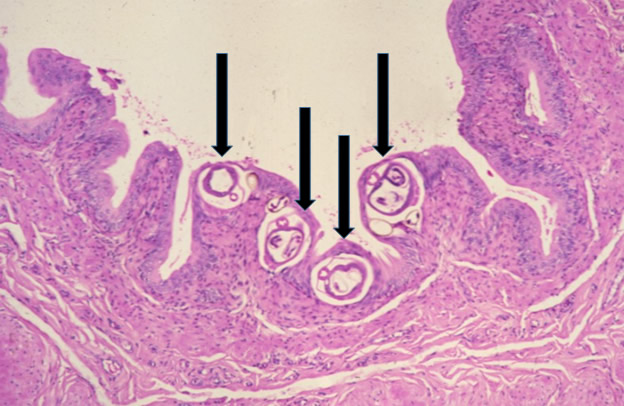Etiology: Trichosomoides crassicauda is the bladder threadworm which infects rats.
Incidence: Incidence of infection is rare.
Transmission: Transmission occurs by ingestion of ova. Transmission often occurs from parent to weanling offspring.
Distribution: Urinary bladder, ureter and renal pelvis.
Clinical Signs: None usually observed. Dead worms may act as a nidus for urinary calculus formation. Migrating larval forms in the lungs may aggravate concurrent respiratory disease.
Diagnosis:
Antemortem: Examine the urine for eggs or worms.
Diagnostic Morphology:
Female: 9 – 10 mm long.
Male: 1.3 – 3.5 mm long, lives within the female reproductive tract.
Ova: 55 – 70 x 30-45 µm, brown, thick-walled with bipolar plugs
Postmortem:
1. Direct or subgross microscopic examination of urinary bladder.
2. Histopathologic examination of the urinary bladder reveals worms in the lumen or embedded within the transitional epithelium (arrows).

